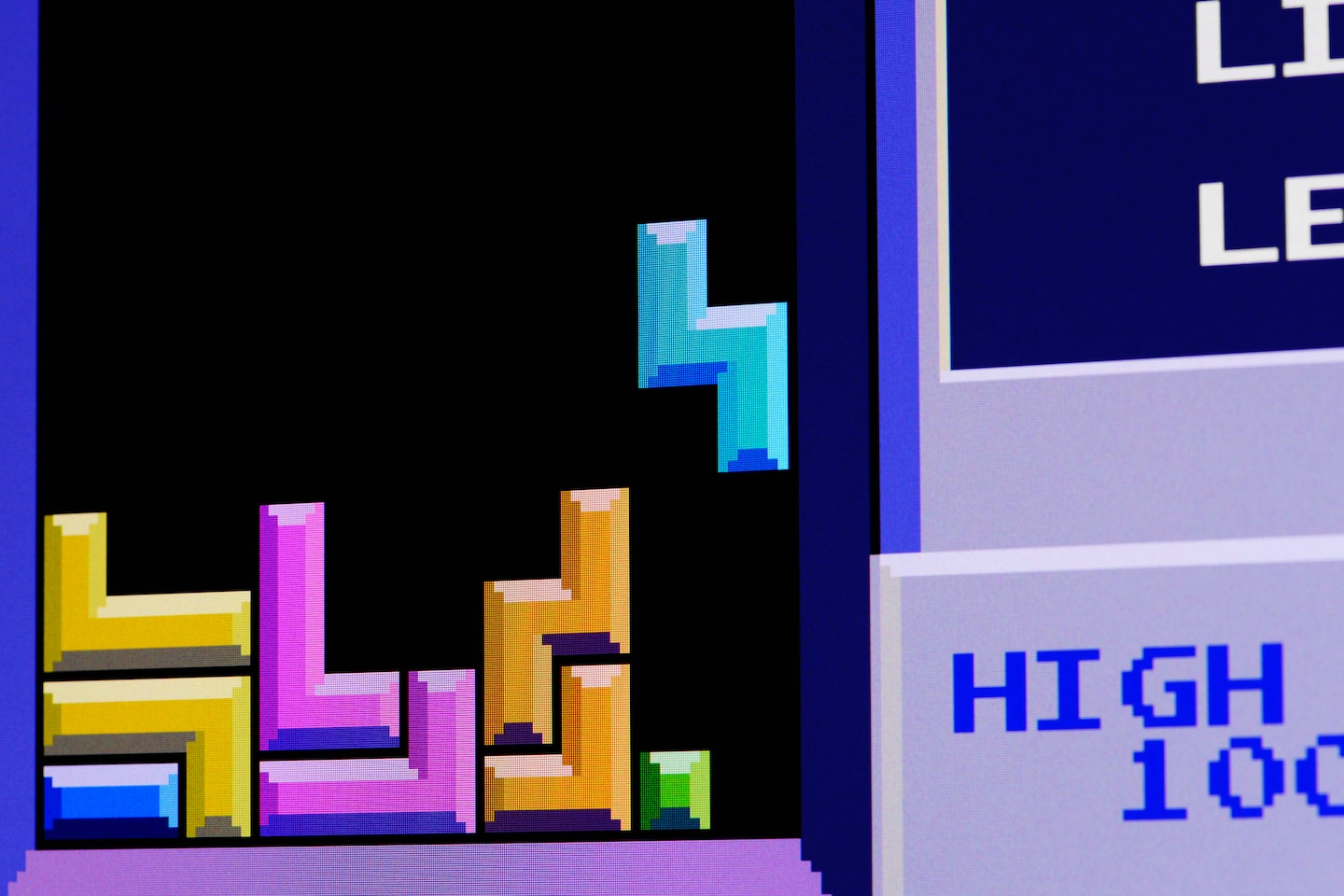[ad_1]
A 13-year-old boy, Willis Gibson, from Oklahoma holds the Tetris title after he beat the game by crashing it on Level 157. Beating Tetris means the player moved the tiles too fast for the game to keep up with the score, causing the game to freeze. Artificial intelligence can suggest strategies that allow players to more effectively control the game tiles and slot them into place faster — these strategies helped crown the game’s first winner.
But there’s far more to Tetris than the elusive promise of winning. The game, in which players must manipulate blocks of different shapes as they slide down a screen, is based on a fundamental element of geometry, called dynamic spatial reasoning, which is taught by mathematics educators like me and used by architects, engineers and animators, among others. As players employ these geometric skills to progress in Tetris, playing the game both tests and improves a player’s dynamic spatial reasoning.
A Russian computer scientist named Alexey Pajitnov invented Tetris in 1984. The game itself is very simple: The Tetris screen is composed of a rectangular game board with dropping geometric figures. These figures are called tetrominoes, made up of four squares connected on their sides in seven different configurations.
The game pieces drop from the top, one at a time, stacking up from the bottom. The player can manipulate each one as it falls by turning or sliding it and then dropping it to the bottom. When a row completely fills up, it disappears and the player earns points.
As the game progresses, the pieces appear at the top more and more quickly, and the game ends when the stack reaches the top of the board, leaving the player with no more room to maneuver.
Dynamic spatial reasoning
Manipulating the game pieces gives the player an exercise in dynamic spatial reasoning. Spatial reasoning is the ability to visualize geometric figures and how they will move in space. So, dynamic spatial reasoning is the ability to visualize actively moving figures.
The Tetris player must quickly decide where the falling game piece will best fit and then move it there. This movement involves both translation, or moving a shape right and left, and rotation, or twirling the shape in increments of 90 degrees on its axis.
Spatial visualization is partly inherent ability, but partly learned expertise. Some researchers identify spatial skill as necessary for successful problem solving, and it’s often used alongside mathematics skills and verbal skills.
Spatial visualization is a key component of a mathematics discipline called transformational geometry, which is usually first taught in middle school. In a typical transformational geometry exercise, students might be asked to represent a figure by its x and y coordinates on a coordinate graph and then identify the transformations, such as translation and rotations, necessary to move it from one position to another while keeping the piece the same shape and size.
Reflection and dilation are the two other basic mathematical transformations, though they’re not used in Tetris. Reflection flips the image across any line while maintaining the same size and shape, and dilation changes the size of the shape, producing a similar figure.
For many students, these exercises are tedious, as they involve plotting many points on graphs to move a figure’s position. But games like Tetris can help students grasp these concepts in a dynamic and engaging way.
Transformational geometry beyond Tetris
While it may seem simple, transformational geometry is the foundation for several advanced topics in mathematics. Architects and engineers both use transformations to draw up blueprints, which represent the real world in scale drawings.
Animators and computer graphic designers use concepts of transformations as well. Animation involves representing a figure’s coordinates in a matrix array and then creating a sequence to change its position, which moves it across the screen. While animators today use computer programs that automatically move figures around, they are all based on this kind of transformation.
Calculus and differential geometry also use transformation. The concept of optimization involves representing a situation as a function and then finding the maximum or minimum value of that function. Optimization problems often involve graphic representations where the student uses transformations to manipulate one or more of the variables.
Lots of real-world applications use optimization — for example, businesses might want to find out the minimum cost of distributing a product. Another example is figuring out the size of a theoretical box with the largest possible volume.
All of these advanced topics use the same concepts as the simple moves of Tetris.
Tetris is an engaging and entertaining video game, and players with transformational geometry skills might find success playing it. Research has found that manipulating rotations and translations within the game can provide a solid conceptual foundation for advanced mathematics in numerous science fields.
Playing Tetris may lead students to a future aptitude in business analytics, engineering or computer science — and it’s fun. As a mathematics educator, I encourage students and friends to play on.
Leah McCoy is a mathematics educator at Wake Forest University with prior experience at the middle school and high school level. Her particular areas of research interest are technology tools for teaching mathematics and equity issues in mathematics education.
This article was produced in collaboration with theconversation.com.
[ad_2]
Source link

